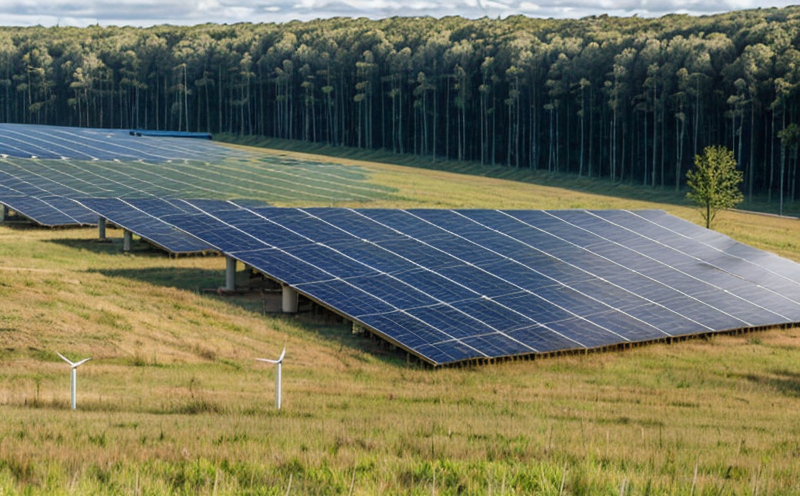ASTM E2939 Life Cycle Analysis of Wind Energy Environmental Impact Test
The ASTM E2939 standard provides a standardized approach to performing life cycle assessments (LCAs) for wind energy systems. This testing is crucial in understanding the environmental impact associated with the entire lifecycle of wind turbines, from raw material extraction through end-of-life disposal and recycling.
This comprehensive test allows stakeholders to make informed decisions about sustainable practices within the renewable energy sector by providing detailed insights into various phases including manufacturing, installation, operation, maintenance, decommissioning, and final recycling. By adhering to this standard, organizations can ensure that their products comply with regulatory requirements while also promoting environmental responsibility.
The process involves several key steps:
- Material sourcing and processing
- Manufacturing processes used in producing components such as blades, towers, nacelles etc.
- Installation methods employed during construction of wind farms
- Operational performance throughout the lifetime of a project
- Maintenance activities conducted to extend equipment lifespan
- Decommissioning plans put in place for old facilities
Through this analysis, manufacturers and developers can identify areas where improvements could be made both from an economic standpoint as well as environmentally friendly operations. It helps them understand what impacts their product has on the environment so they can take steps towards reducing those effects.
The ASTM E2939 standard ensures consistency across different studies conducted by various organizations, making it easier for policymakers to compare results and enforce regulations consistently worldwide.
Why Choose This Test
Selecting ASTM E2939 Life Cycle Analysis for Wind Energy Environmental Impact Testing offers numerous advantages. Firstly, it provides a robust framework that ensures all aspects of the wind turbine's lifecycle are considered when evaluating its environmental footprint.
This method allows organizations to focus on optimizing their processes and materials selection based on real data rather than guesswork or assumptions. Secondly, by participating in this type of assessment, businesses demonstrate their commitment to sustainable practices which can enhance brand reputation among environmentally conscious consumers.
Additionally, compliance with such standards enhances trust between manufacturers, suppliers, regulators, and customers ensuring that all parties involved have confidence in the accuracy and reliability of the information provided. Lastly, it opens up opportunities for innovation by encouraging continuous improvement within supply chains."
Quality and Reliability Assurance
The ASTM E2939 standard plays a crucial role in ensuring quality and reliability assurance during wind energy environmental impact testing. By following this guideline, laboratories can achieve consistent and accurate results across multiple studies conducted by different organizations.
This consistency is vital because it enables stakeholders to compare findings reliably when making policy decisions or purchasing materials/technologies. Moreover, adherence to the ASTM E2939 standard helps maintain high standards of integrity within the renewable energy sector."
Benefits
- Achieves compliance with international standards like ASTM E2939 which is essential for regulatory requirements
- Promotes sustainability by identifying ways to minimize environmental impacts throughout the product lifecycle
- Helps companies differentiate themselves in competitive markets through transparent communication about their products' environmental credentials





